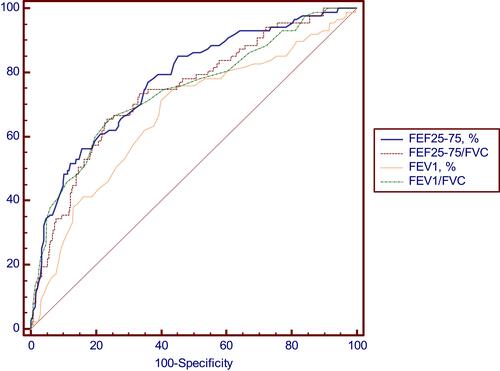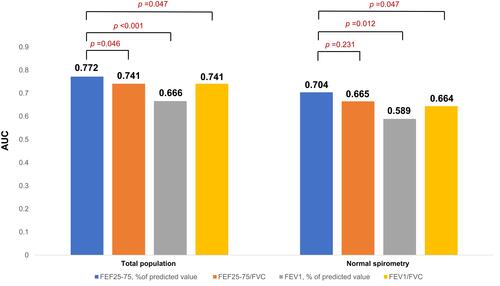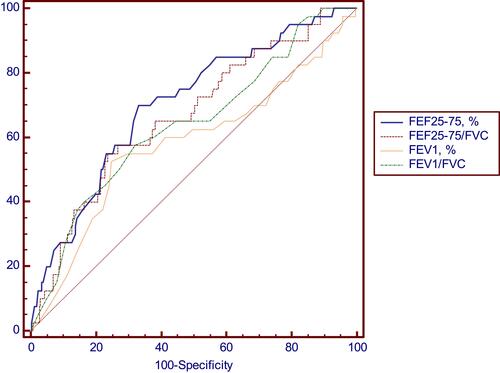Figures & data
Table 1 The Baseline Characteristics of Overall Study Population
Table 2 AUC Values of Typical Spirometric Indices Obtained Based on All Patients’ Spirometry
Figure 1 ROC curves for predicting AHR to mannitol (total study population).

Figure 2 ROC curves for predicting AHR to mannitol (subjects with normal spirometry).

Table 3 AUC Values of Typical Spirometric Indices in Patients with Normal Spirometry (FEV1 ≥ 80% and FEV1/FVC ≥ 70)
Figure 3 AUC distributions in the total study population and subjects with normal spirometry.

Table 4 Criterion of FEF25–75 for Predicting AHR to Mannitol
Table 5 Unadjusted or Adjusted or of FEF25–75 ≤Optimal Cut-Off Values for AHR to Mannitol
